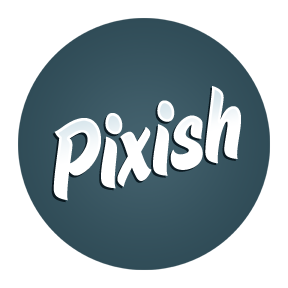Pixish, Spec Work, and Graggers
This post also appears in Pixish News.
 During the Jewish holiday of Purim, we tell a story about a dude named Haman. He was one in a long line of history’s baddies who tried to do away with the Jews. He was so evil that, to this day, every time his name is read aloud, everyone in the synagogue boos. There are even special noisemakers called “graggers” designed just for this purpose.
During the Jewish holiday of Purim, we tell a story about a dude named Haman. He was one in a long line of history’s baddies who tried to do away with the Jews. He was so evil that, to this day, every time his name is read aloud, everyone in the synagogue boos. There are even special noisemakers called “graggers” designed just for this purpose.
“Spec work” is the Haman of the design industry – a character so loathsome that the merely speaking the words causes an uproar that drowns out everything else. Problem is, some good ideas are getting lost in the commotion.
I’m going to talk about “spec work” here, as it relates to Pixish. I know that, just by using the term, there are people warming up their graggers before they’ve even read this far. But please hold off on the noisemaking for just a little bit, because there’s something worth talking about here.
(Oh, and Haman? Kicked his ass, sucka.)
The Villain
I’ve worked as a photographer, designer, and consultant since 1995. I’ve worked for design agencies on big accounts like Nike and Sony and as a freelancer for startups and nonprofits. So of course I’ve been aware of spec work.
Spec work is when you’re asked by a client to do work which may not be paid for upon completion (the “spec” is for “speculative”). That’s a problematic definition, because all contests work this way. The real problem, in my opinion, has to do with an inequality in the power relationship between client and designer.
The typical Evil Spec Work story goes like this: Big company says to little designer, “make me a logo!” The designer works for days on the logo and hands it over to the company. “No good!” they say, and walk away. Later the designer finds out that the company had been doing that with lots of designers, and they only paid for the one they liked (if any).
The company has all the power. The designers, disconnected from each other and working in the dark, are victimized by the company because they spent time on a design for no pay.
It’s a totally rational response for designers to band together, declare this kind of work evil, and promise each other not to do it. It’s also understandable, then, to see the fury designers express when a client is outed for soliciting spec work. Here’s where the arguments about spec work “devaluing the industry” come into play. If one client gets away with it, the fear is, more will follow.
So spec work is evil. But Pixish is not spec work.
Failing Fast
There’s a saying that’s popular with entrepreneurs: “fail fast.” It means that it’s better to find out what you’re doing wrong sooner than later. I don’t think we failed, but we did make some mistakes. And boy did we do it fast (the site is still less than two weeks old).
We didn’t make our mission clear enough from the outset. In my endless optimism, we started out with a barrier to entry that was too low for publishers (aka clients), so we had some crappy assignments at launch. When artists saw a bunch of assignments that listed “my thanks” as a reward for a real design task, they got rightfully pissed.
I made a post the day we launched. It said: “We’re new. Some things will break. Some will just not be very clear. We’re asking you to tell us what you think of it – the good and the bad – to help us make it better.” Turns out, I was right. Really very right. So we started making changes.
First thing we did is institute a review process, so we can catch the assignments that aren’t up to snuff before they go public. I hope we don’t always have to do this, but I’m happy to have us do a little extra work to avoid bad assignments while we get on our feet. The result is a list of assignments that’s a lot better. Right now we have everything from book covers to magazines to gallery shows. Opportunity abounds.
We also instituted a “no design work” rule. This angered more people than it placated, judging by the feedback. And I admit the line between a picture and a design can be blurry, but here’s how I see it: Design is the combination of elements, created for a client, to be used as a whole. Pictures are those individual elements (photos and illustrations), to be combined by a designer. Pixish is for soliciting those raw materials – not completed design projects. It’s the difference between shooting a photo for a magazine and designing a completed page.
We may expand our scope in the future, we wanted to focus the site on the problem it was created to solve.
The Problem We Want to Solve
There are two communities that need better tools to interact with one another. I happen to be a member of both.
On one side, I’m a photographer. Sure, I do other things to make a living, but I’d still love to do more with my photography. So I join some microstock sites. I upload work. I tag, title, and describe each photo. It’s a time-consuming experience. And none of it may ever get seen. There’s just too much work out there. If it does get seen and chosen, I’ll get a handful of change per photo, if I’m lucky.
On the other side, I’m a publisher. I make Fray. I put out a call for submissions, review them all, choose the best, and make arrangements with each artist individually. I love it, but it’s incredibly time-consuming. I wish there was a way I could put out a call for submissions, empower the community to sort them, and have a more elegant way to choose and reward the best submissions. I think a lot of publishers would invite more participation from their readers if there was an easier way to do it.
This is the problem Pixish was designed to solve. Note that it’s not intended for design work – it’s for visual stock. This isn’t to say that photographers and illustrators don’t spend a lot of time and energy on their work – they do – but it’s not the same. It’s also not to say artists won’t create new work for Pixish – they will – but that’s up to them. It would be foolish, not to mention impossible, to require artists to only upload old work.
Also note that the power relationship has changed. Clients aren’t taking advantage of designers in secret. The publisher is inviting submissions (something that most publications do), but instead of doing it in private, making different deals with different contributors, it’s all out in the open. The publisher lists a gig and a reward. It’s up to each artist to determine for themselves if it’s a contest worth entering.
This is just a new version of the submissions page that every magazine and newspaper has already, just opened up for all to participate, and in one central location.
We’ve tried to design the system to give as much power to the artist as possible. The artist owns their work – they lose no rights by uploading. If the artist chooses to submit to an assignment, again, they lose no rights. The publisher cannot publish the work if it does not win the assignment. The artist can remove their work from the assignment (and the site) at any time. Only after the work is chosen by the publisher as a winner, and the artist is paid the listed rewards, can the work be published.
As the site stands now, yes, it’s just a collection of contests. And if you don’t like contests, then you won’t like Pixish. We have plans for more tools to better connect the communities of artists and publishers.
Moving Forward
In the hopefully near future, we’ll have better tools for listing assignments and exchanging money. So if you want to only consider paying assignments, you can. On the other hand, if you don’t like the whole concept of prizes and just want to participate in the “Just for Fun” assignments, you can do that too.
And, of course, we need a messaging system. We want to enable publishers to create a little black book of their favorite artists, and be able to offer work to them directly. We’ve started with contests, but want to quickly expand into offering more ways for publishers and artists to connect.
If you’re an artist who already has a career and clients, we mean you no harm. We hope you’ll participate, too, but even if you don’t, we hope you won’t mind if we give some opportunities to other artists. And if you really think that our little collection of contests is “harming the industry,” well, all I can say is that’s not our intent.
I think this has a lot to do with trust. And trust can’t be asked for – only earned. So give us some time with Pixish to earn your trust. I know we can do it.
The bottom line is that we know there are tons of talented people out there on the web. We want to give them a chance to get found, get paid, and get published. If you want a hand getting your work out there, then Pixish is for you. Thanks for giving it a try.
You may now spin your graggers.
